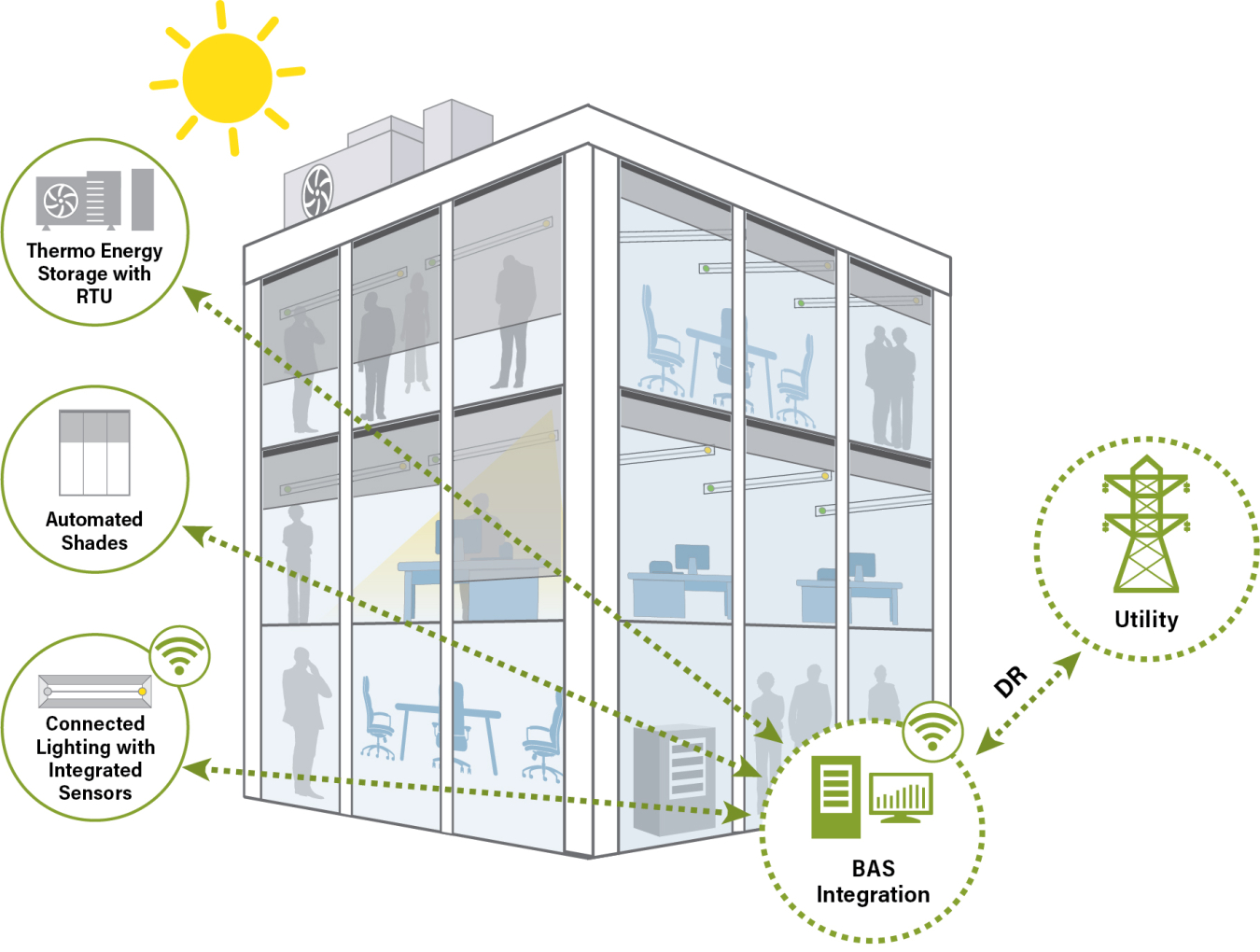
Lead Performer: Slipstream – Madison, WI
Partner: Michigan State University – East Lansing, MI
DOE Total Funding: $499,159
Cost Share: $414,671
Project Term: June 1, 2020 – May 31, 2023
Funding Type: Advanced Building Construction FOA Award Cooperative Agreement
Project Objective
In regions that have high utility demand charges, utilities and building communities have a great need to develop diverse approaches for grid flexibility in end-user loads. There is significant potential for building load flexibility in commercial lighting and HVAC systems by integrating sensors and controls from multiple building energy systems. The project team proposes to conduct technical analysis and field testing of the integrated system of connected lighting, automated shades, and intelligent thermal storage.
The project team will analyze and field-test two integrated systems:
- Connected lighting, automated shades, and intelligent energy storage
- Connected lighting and automated shades
The main project objective is to conduct a technical analysis to investigate the integrated systems’ potential in providing grid-interactive flexible building loads and validate the performance in two real buildings. Since demand-related charges usually represent 30 to 70 percent of most commercial customers’ electric bills, our ideal field test locations are in the Northeast and California, where utility demand charges are the highest. Suitable building types are owner-occupied office buildings or higher-education facilities that have high daylight availability and large common working spaces.
The project will focus on integrating the high-density occupancy and daylighting sensor signals from connected lighting systems and the real-sky condition, the solar angle, and the solar radiation readings from automated shading systems with building automation systems (BAS), to optimally control each shade’s positions and lighting fixture’s dim levels for load shedding. The team will also integrate NETenergy’s hybrid rooftop unit (RTU) + thermal storage prototype for HVAC load shifting.
Project Impact
The project will target the connected lighting system with automated shades to provide short-term (one hour) load shedding capability of reducing 50 percent of lighting power with an occupant dissatisfaction rate of less than 10 percent. Also, it will target the connected lighting system with automated shades and intelligent thermal storage to provide load-shifting capability (up to four hours) to reduce 40 percent of HVAC and lighting loads, with an occupant dissatisfaction rate of less than 10 percent.
Contacts
DOE Technology Manager: Charles Llenza, Charles.Llenza@ee.doe.gov
Lead Performer: Xiaohui Zhou, Slipstream

